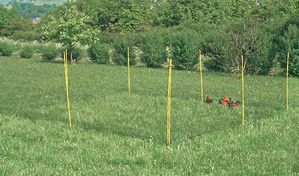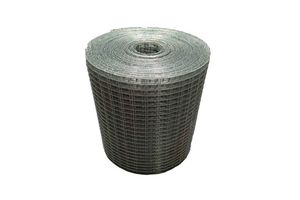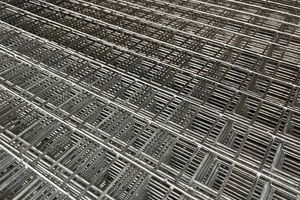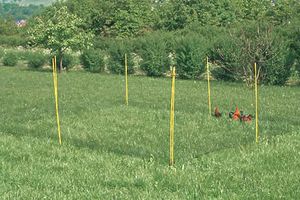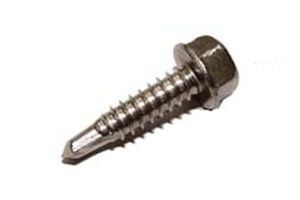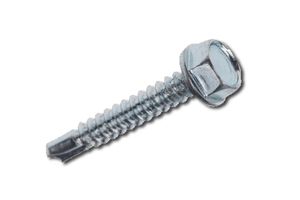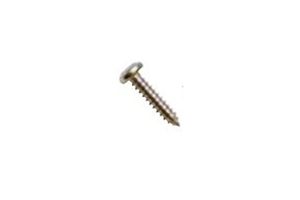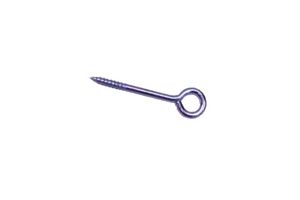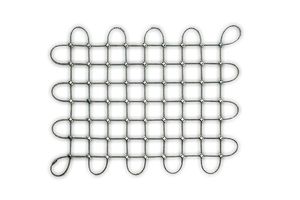How to Build a Chicken Run That's Secure: A Step-By-Step Guide
Whether you want to learn how to build a chicken run for your garden at home or for a larger farm, Huck’s step-by-step guide will help you create a safe and secure space for your feathered friends.
Building your own chicken run gives you full freedom over the size, layout, and design of the enclosure, so you can create a pen that both fits the space you have available and keeps your poultry happily safe.
Our guide includes a list of the materials you will need, our recommended products, and instructions on how to DIY your chicken run coop.
What You Need for a DIY Chicken Enclosure
First things first, you’ll need to acquire the materials and equipment to construct your coop.
We’ve laid them out below so you can use it as a checklist to make sure you have everything set.
| Materials | Tools |
|---|---|
|
|
What Type Of Fence Netting is Best for Chicken Runs?
The fence netting you use for your chicken run is crucial for making the structure safe for your birds and protecting them against potential predators.
We know a thing or two about netting and keeping birds safe, so we've got some recommendations to help you keep your chickens safe.
Weldmesh Wire Netting
Our Weldmesh wire netting is the preferred choice for chicken runs because it is significantly stronger and more durable than standard chicken wire. The hot-dipped galvanisation gives your feathered friends additional protection and you peace of mind.
Its welded construction ensures it can withstand force and wear over time, making it an excellent barrier against larger or more determined predators.
While standard chicken wire may suffice for smaller threats, it can easily bend or break under pressure, leaving your chickens vulnerable. Using our Weldmesh fencing, on the other hand, provides extra protection, offering peace of mind that your birds are secure even when faced with higher quantities of predators.
This durability also means less frequent repairs or replacements, making it a worthwhile investment for long-term safety and reliability.
Poultry Netting
While poultry netting can serve as a helpful secondary level of protection for chicken runs, it is not recommended to rely on it as the sole barrier.
That said, our poultry netting has a role in your chicken run. A bit like aviary netting, poultry barrier netting is particularly useful for keeping chickens contained and deterring smaller birds or animals from entering the enclosure. Made from high tenacity knotless polypropylene, this netting can withstand exposure to the elements year-round for added protection. It can also be removed from your run and used as a stand-alone corral while you clean the run and coup.
For optimal security, poultry netting should be combined with sturdier materials like weldmesh to ensure your chickens are fully protected.
Explore our Bird Netting Range
How to Build a Chicken Run: Step-By-Step Instructions
Once you have all the materials and tools ready, you can start constructing your chicken coop using our steps below.
Feel free to tweak the steps as you go if you find a better way to do something or if you need to adjust for your specific space and needs.
Step 1. Set out the Dimension Plans of Your Run
To build your chicken run, start by measuring and marking the space. Use pegs and string to outline the area and make the boundaries clear.
Decide on the size based on how many chickens you have and the space they’ll need to move comfortably. Drive pegs into the ground at each corner of the area, then connect them with string to create a clear outline.
This will be the foundation for your construction.
Step 2. Install Your Posts
Once you’ve marked your outline, you can begin installing the posts to form the frame of your chicken run.
Start by placing posts at each corner of the outlined area to anchor the structure. Then, position additional posts along each side at regular intervals to provide stability.
Check that each post is firmly secured in the ground to withstand movement or pressure. The deeper the posts, the more secure they are.
For a secure chicken run, it’s recommended to space the posts no more than 6 feet (approximately 1.8 metres) apart. If your run is particularly large or intended to house several chickens, you may need to reduce the spacing to ensure the frame remains sturdy.
Step 3. Build the Frame
If you're building a tall chicken run with multiple levels, you'll need a more robust frame than just posts.
Start by connecting the posts with horizontal beams at the top and bottom. These beams will keep the posts in place and prevent them from shifting or collapsing. Use durable materials like treated timber or metal, and make sure everything is securely fastened with screws, brackets, or bolts.
Our Posi-Panhead stainless steel screws are ideal for creating a sturdy frame thanks to the inherent weather-resistant properties of the steel.
For extra strength, add diagonal braces between the posts and beams. These braces help spread the weight and stress evenly, making the frame more stable.
If your chicken run has multiple levels, include platforms or intermediate beams supported by vertical or diagonal braces. This added reinforcement will keep the structure steady, even under heavy use.
Step 4. Install the Roof Frame
If you’re planning to add a roof to your chicken run (which we highly recommend for added protection), it’s best to construct the roof frame on the ground first. This allows you to work with greater ease and precision, ensuring the frame is sturdy and well-assembled.
Once the roof frame is complete, carefully lift it into position and secure it to the top of the posts or the main frame you’ve already set up.
Be sure to use sturdy fastenings like screws or bolts to keep the roof securely in place.
If you're using corrugated steel sheets for the roof, you can get away with a simpler frame to secure the roof.
Step 5. Attach the Chicken Wire & Hardware Cloth
Now your frame is complete, it's time to attach the chicken wire to make it secure. We recommend using our durable Weldmesh fencing for your chicken run. The hot-dipped galvanising gives it additional durability to keep your chickens safe from predators.
Start by unrolling the chicken wire and positioning it against the outer side of the frame. Beginning at one corner, use heavy-duty staples and a staple gun to secure the wire to the wooden posts of the run.
Place staples at regular intervals, approximately every 3–4 inches, to ensure the wire is firmly attached. As you work your way around the frame, pull the chicken wire taut to eliminate sagging and gaps.
This step is crucial to prevent predators or small animals from slipping under or through the wire.
To reinforce the security of the run, hardware cloth should be installed along the bottom edges of the structure. Hardware cloth is a much more durable material compared to chicken wire, with smaller gaps that are effective at keeping out even the most persistent predators.
Cut the hardware cloth to fit tightly along the base of the frame, allowing it to extend slightly outward onto the ground for additional protection.
Attach it securely to the posts and frame using screws and large washers, ensuring it overlaps slightly with the chicken wire for a seamless barrier.
Finally, bury the outward-facing edge of the hardware cloth a few inches into the soil to further deter digging animals and enhance stability.
Step 6. Install a Door or Gate (Optional)
Having a door or gate in your chicken run is essential for convenient access, particularly in taller runs where reaching over the top is impractical.
To construct a secure door, begin by measuring the opening where the door will be installed and assembling a sturdy frame using wooden boards. Cover the frame with the same hardware cloth or chicken wire used on the run, ensuring it is tightly affixed to prevent gaps.
Attach the door to the run using heavy-duty hinges that can withstand frequent use and the weight of the door.
For security, install a strong latch system, such as a padlock or a spring-loaded latch, to ensure the door stays firmly closed and prevents predators from gaining entry.
Step 7. Finish the Chicken Coop With Roosting Bars (Optional)
To make your chicken run an enriching space for your feathered friends, we recommend adding some roosting bars.
Start by selecting sturdy wooden bars or branches that are smooth and free of splinters. Measure the length of the chicken run and cut the bars to fit securely inside.
Place the roosting bars at varying heights, ensuring they are at least 2 feet off the ground to give the chickens a safe and comfortable perch.
Secure the ends of the bars to the sides of the run using brackets or screws, making sure they are tightly fastened to hold the weight of multiple chickens.
Does My Chicken Flock Need a Chicken Run?
A chicken run is essential for your flock’s safety and well-being. It provides a secure, enclosed space where chickens can roam, forage, and exercise while being protected from predators and environmental hazards.
A run helps prevent chickens from wandering into unsafe areas and keeps them away from your garden or other restricted spaces.
Also, a well-maintained chicken run promotes healthier and happier birds by offering them room to exhibit natural behaviours like scratching and dust bathing.
Should the Run Be Covered?
Covering the chicken run is highly recommended for providing protection from both predators and the elements, especially in the UK.
A solid or bird netting roof can deter predators such as foxes and birds of prey, which are common threats to chickens. A covered run also helps shield your flock from the UK's often unpredictable weather, including heavy rain, cold winter weather, and strong winds.
This ensures the chickens remain dry and comfortable while reducing the risk of illnesses caused by prolonged exposure to damp conditions.
Where Should Your Chicken Run Be Located?
When setting up your chicken run, focus on keeping your flock safe and comfortable. Choose a location with minimal access for predators—avoid areas near hedges, fences, or overhanging trees where predators like foxes might hide or climb.
Make sure the run has some shade to protect your chickens from overheating in hot weather, but also allow for sunny spots to keep them warm on cooler days. If possible, place the run in a sheltered area to shield your chickens from strong winds and heavy rain.
By balancing these factors, you can create a safe and comfortable space for your chickens.
Is It More Cost-Effective to Buy or Build a Chicken Run?
Deciding whether to buy or build a chicken run depends on your priorities and resources. Building your own run lets you fully customise it to fit your space and meet your chickens' needs.
You can choose the materials, size, and layout, making sure it fits perfectly in your garden or yard. However, building from scratch takes time, effort, and some DIY skills.
If you’re short on time or not confident in your skills, buying a pre-made chicken run might be a better option. While it may cost more, it’s easier and usually comes ready to assemble.
Weighing the creative flexibility of building against the convenience of buying will help you choose what works best for you.
Keep Your Garden Chickens Safe With Supplies From Huck Nets
At Huck Nets, we offer a range of high-quality wire that is perfect for building a safe and functional chicken run. Our wire is designed to be strong, weather-resistant, and long-lasting, ensuring your chicken run can withstand the elements and keep your back garden chickens secure for years to come.
With various sizes and specifications available, you'll easily find the right option to suit your needs and create a space that protects your chickens from predators while providing a comfortable environment.
Browse our full range of welded mesh fencing online or contact us today!
FAQs
Does a Chicken Run Need a Roof in the UK?
Yes, a chicken run in the UK benefits from having a roof to protect chickens from predators and adverse weather conditions. A roof also prevents wild birds from entering, reducing the risk of diseases spreading to your flock.
What is the Best Thing to Put on the Bottom of a Chicken Run?
The best material for the bottom of a chicken run is coarse sand or gravel, as it provides good drainage, prevents mud, and is easy to clean. Avoid materials like straw or wood chips, which can retain moisture.
What Predators Do Chickens Have in the UK?
Chickens in the UK face predators such as foxes, badgers, weasels, and birds of prey. Domestic pets like dogs and cats can also pose a threat. Secure enclosures and predator-proofing are essential to protect your flock.
Does My Chicken Run Need Electricity?
Electricity is not essential for a chicken run but it can provide benefits like lighting for extended laying periods or heating during colder months. Consider it based on your flock’s needs and the climate of your area.

